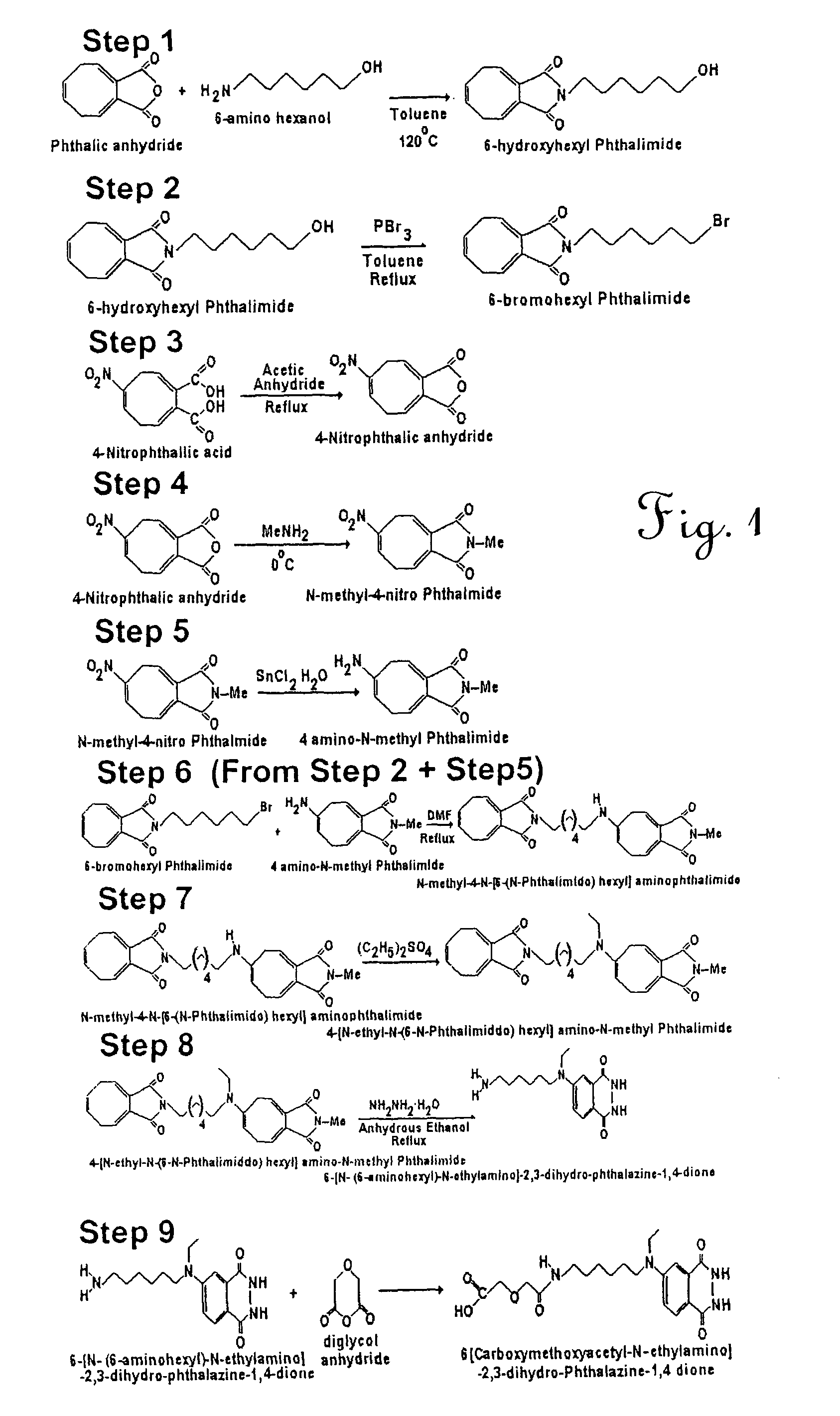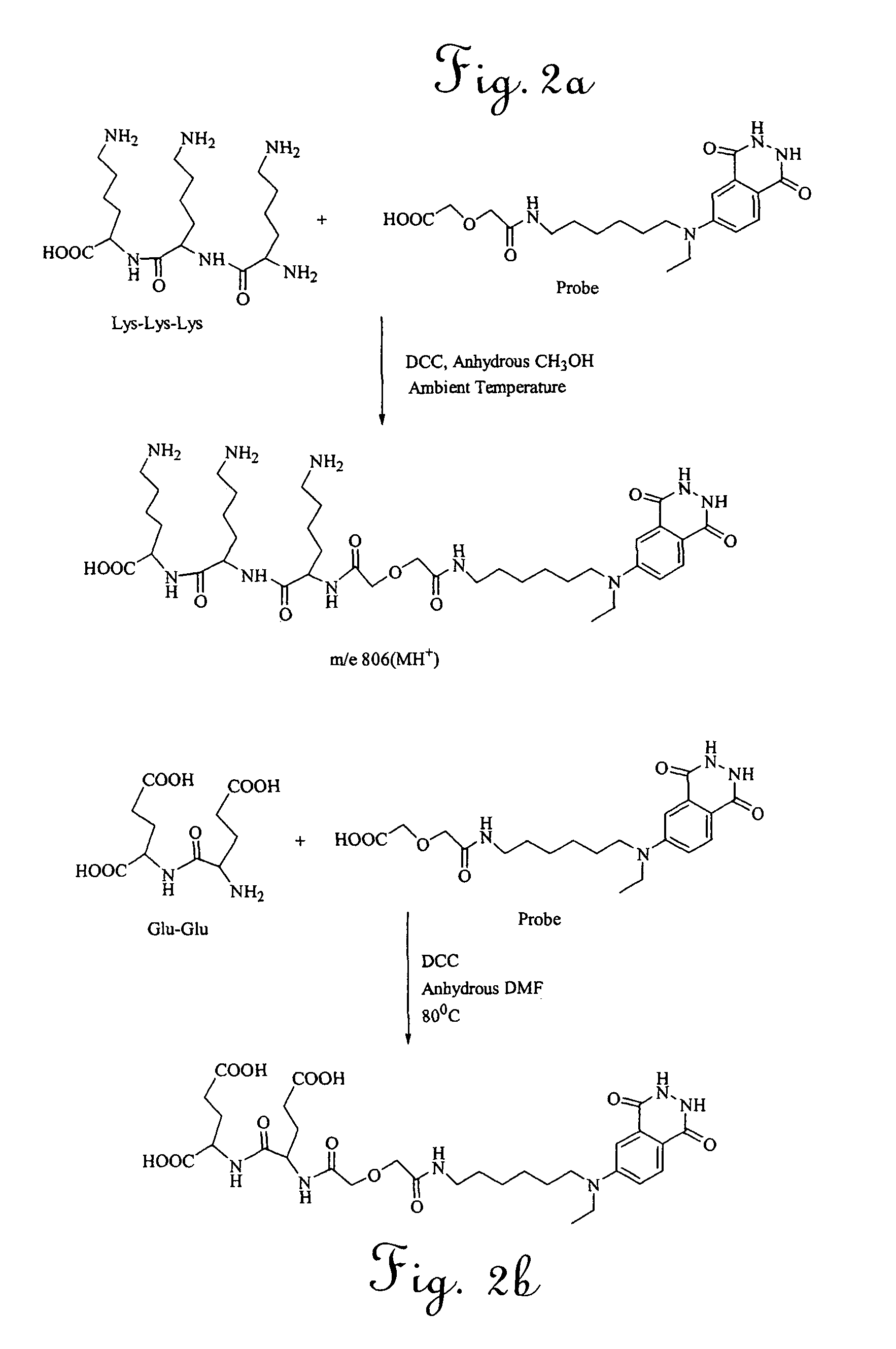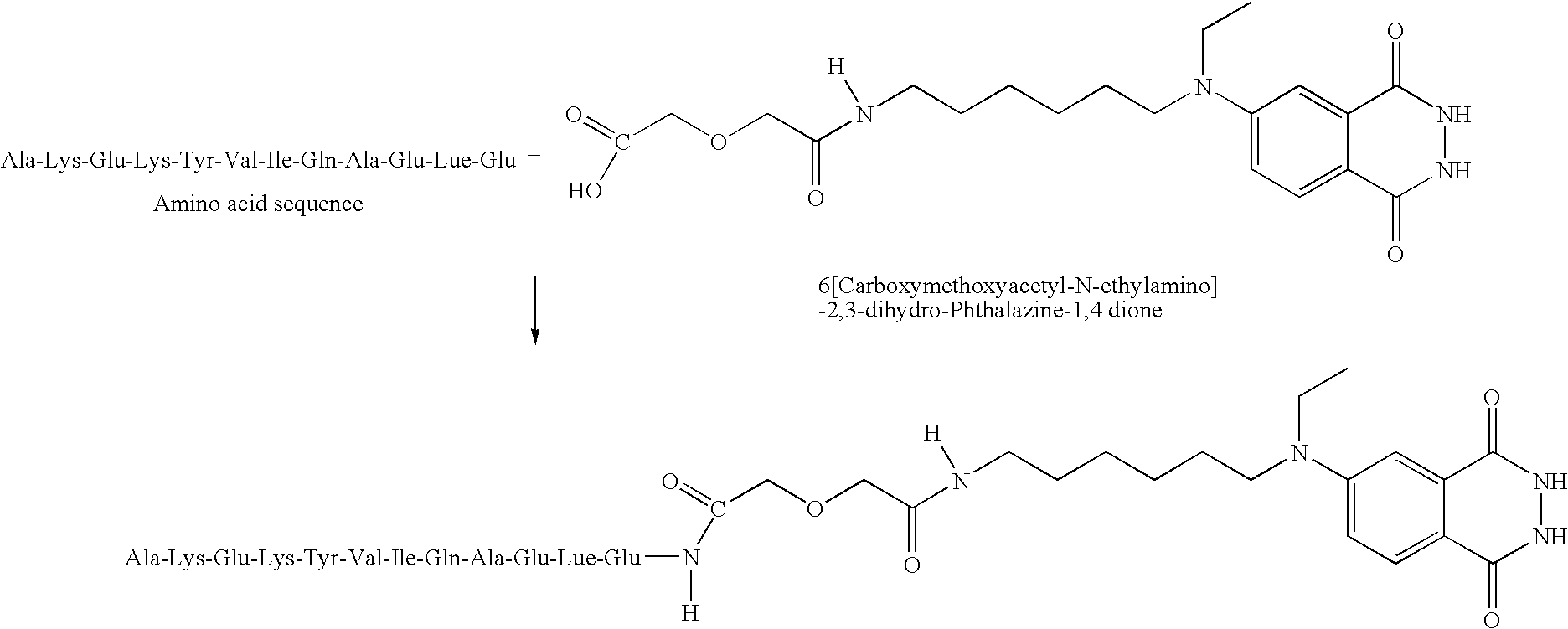Bioactive peptide-based probes
a technology of bioactive peptides and probes, which is applied in the direction of peptides, peptide/protein ingredients, instruments, etc., can solve the problems of limited number of probes, and difficult to achieve the effect of reducing the number of probes
- Summary
- Abstract
- Description
- Claims
- Application Information
AI Technical Summary
Problems solved by technology
Method used
Image
Examples
example 1
[0023]A process was developed to prepare a site-specific probe, comprising modification of a marker by addition of a tether molecule capable of covalently binding to a peptide. The peptide is desirably specific for a receptor on a surface of a target bacteria. The process is depicted schematically in FIG. 1. In this experiment, the detectable molecule was luminol (phthalic anhydride). Phthalic anhydride (11.7 g, 100 mmol) and 6-amino hexanol (14.8 g, 100 mmol) were admixed with 120 ml anhydrous toluene in a flask fitted with Dean-Stork apparatus and refluxed for 12 hr. at 120° C. The water formed was removed as an azeotrope. Toluene was removed using rotavapor. A flash column chromatography was performed over silica gel (230-400 mesh) with ethyl acetate and petroleum ether as eluant. The yield of the resulting 6-hydroxyl phthaliamide compound was 22.7 g (92%), Mp 49-50° C.
[0024]To 6-hydroxyl phthaliamide (22.5 g, 0.09 mole) in 100 ml of anhydrous toluene at 110° C. was added phospho...
example 2
[0032]To standardize the reaction conditions, the isoluminol marker synthesized as described in Example 1 was coupled with low molecular weight synthesized peptides. Two peptides, Lys-Lys-Lys and Glu-Glu were selected. The tri-lysine peptide was selected due to the availability of several amine attachment sites. Glu-Glu was selected due to its carboxyl sites. Both peptides were reacted with the reporter molecule 6-[carboxymethoxyacetyl-N-(6-aminohexyl)-N-ethylamino]-2,3-dihydro-phthalazine-1,4-dione, prepared as described in Example 1. Purified probes were tested using mass spectrometry (Maldi method) and proton and carbon nuclear magnetic resonance (NMR).
[0033]As depicted schematically in FIG. 2, the tri-lysine peptide was reacted with 6-[carboxymethoxyacetyl-N-(6-aminohexyl)-N-ethylamino]-2,3-dihydro-phthalazine-1,4-dione in the presence of dicyclohexylcarbodiimide (DCC) and anhydrous methanol at ambient temperature under nitrogen. NMR spectra showed that the resulting probe was a...
example 3
[0034]The glu-glu peptide was reacted with 6-[carboxymethoxyacetyl-N-(6-aminohexyl)-N-ethylamino]-2,3-dihydro-phthalazine-1,4-dione in the presence of dicyclohexylcarbodiimide (DCC), anhydrous methanol, and a few drops of DMF at 75-80° C. NMR spectra showed that the resulting probe was a single positional isomer. Mass spectrometry indicated that the methylated monomer had a molecular weight of 707. Although not wishing to be bound to any particular theory, because a single positional isomer was formed, the reaction between the Glu-Glu peptide and the reporter molecule may have occurred between the primary amine and the terminal carboxyl group of the probe.
[0035]The Glu-Glu peptide is known to be a potent inhibitor of growth for L. lactis ssp. lactis C2 and other lactic acid bacteria having calcium binding receptors on their outer membrane. Accordingly, the bioactive Glu-Glu probe synthesized herein is expected to bind well to all gram positive bacteria having calcium binding recepto...
PUM
| Property | Measurement | Unit |
|---|---|---|
| time | aaaaa | aaaaa |
| pH | aaaaa | aaaaa |
| temperature | aaaaa | aaaaa |
Abstract
Description
Claims
Application Information
 Login to View More
Login to View More - R&D
- Intellectual Property
- Life Sciences
- Materials
- Tech Scout
- Unparalleled Data Quality
- Higher Quality Content
- 60% Fewer Hallucinations
Browse by: Latest US Patents, China's latest patents, Technical Efficacy Thesaurus, Application Domain, Technology Topic, Popular Technical Reports.
© 2025 PatSnap. All rights reserved.Legal|Privacy policy|Modern Slavery Act Transparency Statement|Sitemap|About US| Contact US: help@patsnap.com



